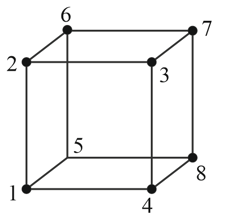I E Irodov Solutions for Chapter: ELECTRODYNAMICS, Exercise 4: ELECTRIC CURRENT
I E Irodov Physics Solutions for Exercise - I E Irodov Solutions for Chapter: ELECTRODYNAMICS, Exercise 4: ELECTRIC CURRENT
Attempt the practice questions on Chapter 3: ELECTRODYNAMICS, Exercise 4: ELECTRIC CURRENT with hints and solutions to strengthen your understanding. Problems in General Physics solutions are prepared by Experienced Embibe Experts.
Questions from I E Irodov Solutions for Chapter: ELECTRODYNAMICS, Exercise 4: ELECTRIC CURRENT with Hints & Solutions
A long cylinder with uniformly charged surface and cross-sectional radius , moves with a constant velocity along its axis. An electric field strength at the surface of the cylinder is equal to . Find the resulting convection current, that is, the current caused by mechanical transfer of a charge.
An air cylindrical capacitor with a dc voltage applied across it, is being submerged vertically into a vessel filled with water, at a velocity . The electrodes of the capacitor are separated by a distance , the mean curvature radius of the electrodes is equal to . Find the current flowing in this case along the lead wires, if . (Permittivity of vacuum, ).
At temperature , the electric resistance of conductor is times that of conductor . Their temperature coefficients of resistance are equal to and , respectively. Find the temperature coefficient of resistance of a circuit segment consisting of these two conductors, when they are connected
(a) in series;
(b) in parallel.
Find the resistance of a wire frame shaped as a cube (figure) when measured between points:
(a) ; (b) ; (c) . The resistance of each edge of the frame is .

At what value of the resistance , in the circuit shown in the figure, will the total resistance between points and be independent of the number of cells?

Figure shows an infinite circuit formed by the repetition of the same link, consisting of resistances and . Find the resistance of this circuit between points and .

A copper wire carries a current of density, . Assuming that one free electron corresponds to each copper atom, evaluate the distance which will be covered by an electron during its displacement, along the wire ().
A straight copper wire of length and cross-sectional area carries a current . Assuming that one free electron corresponds to each copper atom, find,
the time it takes an electron to displace from one end of the wire to the other,
the sum of electric forces acting on all free electrons in the given wire.
( Take number of free electron per unit volume of copper and resistivity of copper , )
